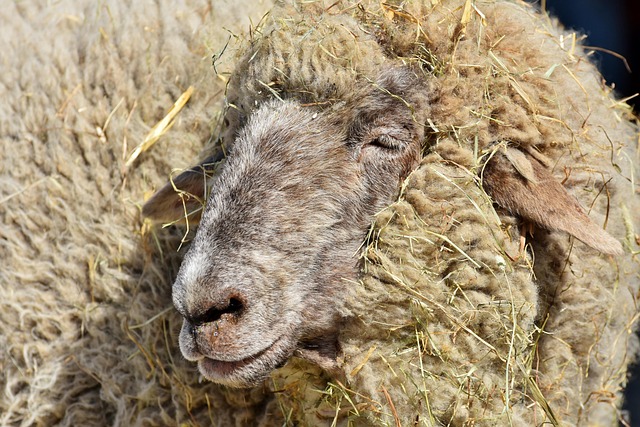Corkscrew weed (Erodium botrys) is one of the most troublesome annual broadleaf weeds across Western Australia—and an especially stubborn foe on the sandy ridges and gravel flats around Morangup. Its corkscrew-shaped seeds embed in sheep wool, goat hair and even household pets, causing fleece downgrades, painful abscesses and avoidable vet bills. Dense mats of this weed also starve pastures of light and moisture, forcing livestock to graze lower-quality forage and exposing soils to wind and water erosion.
This guide compiles the latest research, local farmer experience and proven DPIRD recommendations, giving you a one-stop strategy for long-term suppression. We cover biology, monitoring, cultural, mechanical and chemical tactics, plus essential hygiene and record-keeping routines.
1. How Corkscrew Weed Harms Livestock & Pets
Wool & Mohair Contamination. Sharp awns tangle in fine fibres, forming hard “burrs” that downgrade clip value by 10–35 % at auction.
Abscesses & Seed Migration. Dogs, cats and wildlife pick up seeds between toes or in fur. If awns drill into skin they create painful abscesses, sometimes migrating internally.
Pasture Displacement. In dense stands, corkscrew weed crowds out clovers and ryegrass, reducing energy and protein available to grazing stock and lowering carrying capacity.
2. Botanical ID & Remarkable Self-Burying Seeds
The plant starts as a low rosette (2–5 cm wide) of deeply lobed, hairy leaves. As spring approaches, stems elongate to 40–60 cm bearing pale-pink flowers. After pollination, each flower develops a 5-seed cluster topped by a 6–10 cm “beak”. When the fruit dries it twists like a corkscrew, drilling each seed into the soil for long-term persistence.
An Ancient Name with a Modern Problem
The genus Erodium comes from the Greek erodios (“heron”) owing to the beak-like seed, while botrys (“bunch of grapes”) refers to its clustered fruit. Introduced accidentally in the early 1900s, it has naturalised from the South Coast to the Wheatbelt’s fringe.
3. Seasonal Lifecycle & Critical Monitoring Windows
Autumn — Germination. The first 20–30 mm of rain triggers mass germination; seedlings emerge within 7–10 days.
Winter — Rosette Growth. Plants stay low; this is the best knock-down window (2–4-leaf stage).
Early Spring — Bolting. Herbicide efficacy drops once stems elongate and buds form.
Late Spring — Seed Set. Each surviving plant can add 2,000 + seeds to the soil seed-bank.
Monitoring Tip
Schedule a “weed walk” 10–14 days after each significant autumn rain. Flag patches for immediate follow-up.
4. Cultural & Mechanical Tactics
4.1 Pasture Competition
Oversow bare areas with sub-clover cultivars (e.g. Daliak, Leura) at 8–12 kg/ha. Maintain soil P and K to encourage dense cover. Use rotational grazing so residuals stay above 1,200 kg DM/ha to shade seedlings.
4.2 Spray-Grazing
Apply low-rate phenoxy herbicide (500 mL/ha 2,4-D amine or 1 L/ha MCPA amine) when clovers have 3–8 leaves and rosettes are small. Introduce sheep at 2–4 × normal density for 7–14 days; they gobble wilted weeds first, slashing biomass and seed set.
4.3 Targeted Cultivation
On small outbreaks, a shallow rotary-hoe pass in late autumn, followed by a second pass 10 days later, uproots successive flushes. Avoid deep inversion that resurfaces buried seed.
5. Chemical Control—Post-Emergent Options
2,4-D Amine (625 g/L). 500–800 mL/ha on 2–4-leaf rosettes; delay until clover has 8 leaves to prevent scorch.
MCPA Amine (750 g/L). 0.5–1 L/ha once clovers reach 3 leaves; gentler on legumes.
Ecopar® (pyraflufen-ethyl + MCPA). 400–500 mL/ha Ecopar + 330 mL/ha MCPA: rapid brown-out plus systemic control.
5.1 Pre-Emergent & Residual Options
Sulfometuron-methyl (Shatter 750 WG). 33–67 g/ha on fallow or non-cropped zones in March; observe 12-month plant-back.
Trifluralin. 1–2 L/ha incorporated pre-seeding; useful when establishing new pasture.
6. Biological & Physical Approaches
No commercial biocontrol agents exist yet. Promoting healthy soil biology and competitive pastures aids suppression.
Hand-pull on damp days—remove the full taproot and bag plants for off-site disposal. Mowing pre-flowering reduces biomass but must be followed by grazing or herbicide to stop regrowth.
7. Farm Hygiene & Seed-Spread Prevention
Seeds lodge in tyre treads and undercarriages. Install a gravel wash-down bay at paddock exits; pressure-wash gear and sweep debris. Crutch or brush stock before shifting them to clean country, especially during late-spring seed set.
8. Record-Keeping & Seed-Bank Monitoring
Log every spray date, rate and paddock in a notebook or app. Each spring, collect 10 soil cores (10 cm × 5 cm) per paddock, germinate in trays and count seedlings to track seed-bank trends.
9. Best Practice Checklist—Do’s & Don’ts
Do: rotate control tools, maintain dense cover, clean equipment, pull small patches early and follow herbicide labels.
Don’t: let plants flower, over-graze to bare soil, use the same herbicide group every year, or neglect fence-line hotspots.
10. Applying the Plan to Morangup Soils & Terrain
Sandy ridges: rely on competitive pasture plus light pre-emergent rates.
Gravel gullies: use spray-grazing combined with shallow cultivation.
Clay-loam valley floors: rotate sheep grazing with late-winter MCPA clean-ups.
11. Toward Weed-Free, High-Value Pastures
Corkscrew weed’s self-drilling seeds and rapid autumn germination make it formidable. Yet by combining timely monitoring, diverse control methods and strict hygiene, WA producers can steadily drain the seed-bank and restore productive, erosion-resistant pastures. Stick with the plan for five seasons and the improvement in wool returns, stocking rates and paddock condition will speak for itself.
References
- DPIRD — Erodium botrys Fact Sheet
- APVMA Product Database — 2,4-D Amine Label
- Apparent Ag — MCPA Amine 750 Product Info
- Sipcam Australia — Ecopar® Technical Brochure
- Biodiversity WA — Herbicide Resistance Guidelines
- International Survey of Herbicide Resistant Weeds
- GRDC Spray-Grazing Best Practice Notes
- Seed-Bank Monitoring Methods (Journal of Field Studies)

